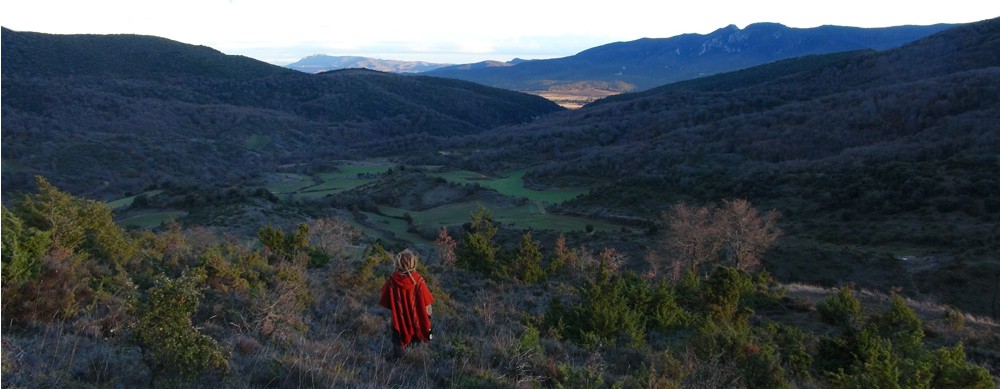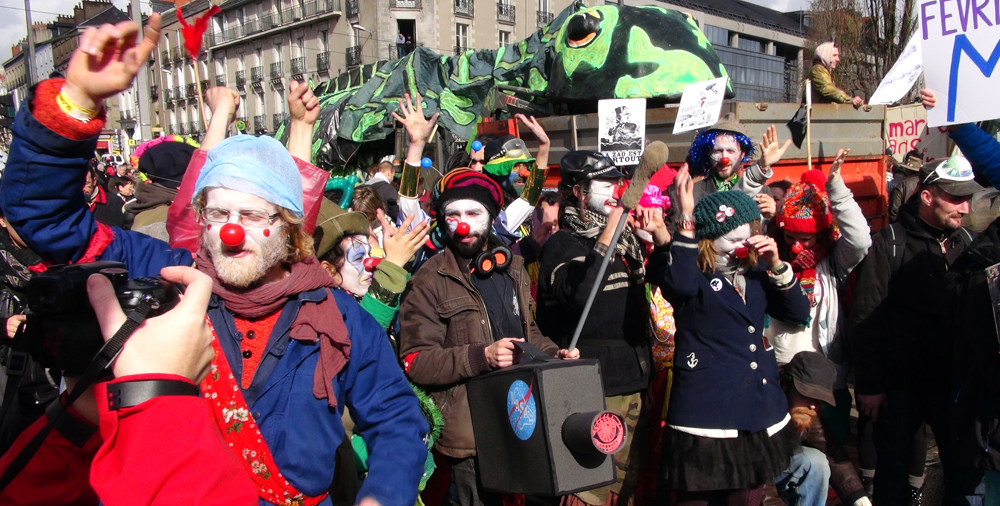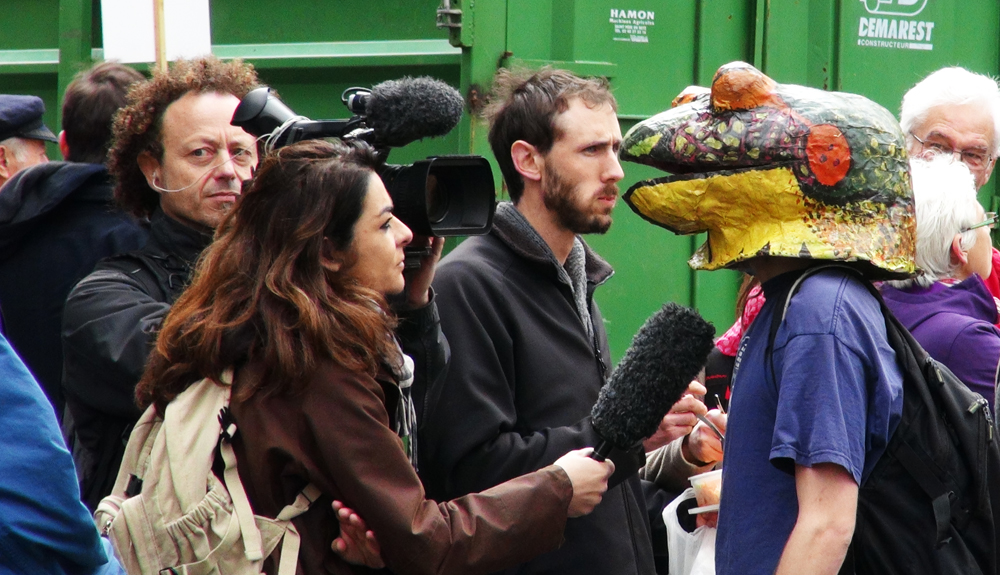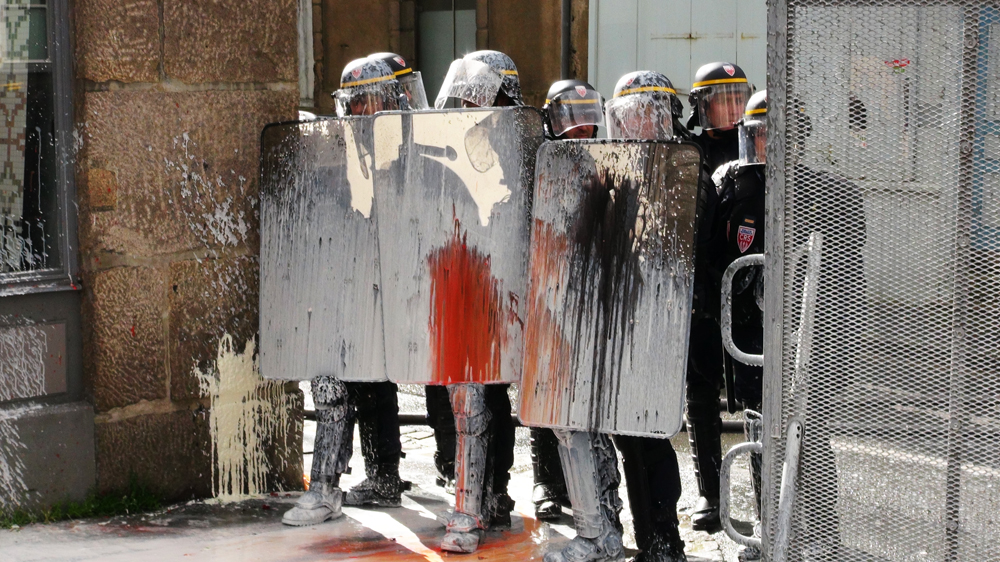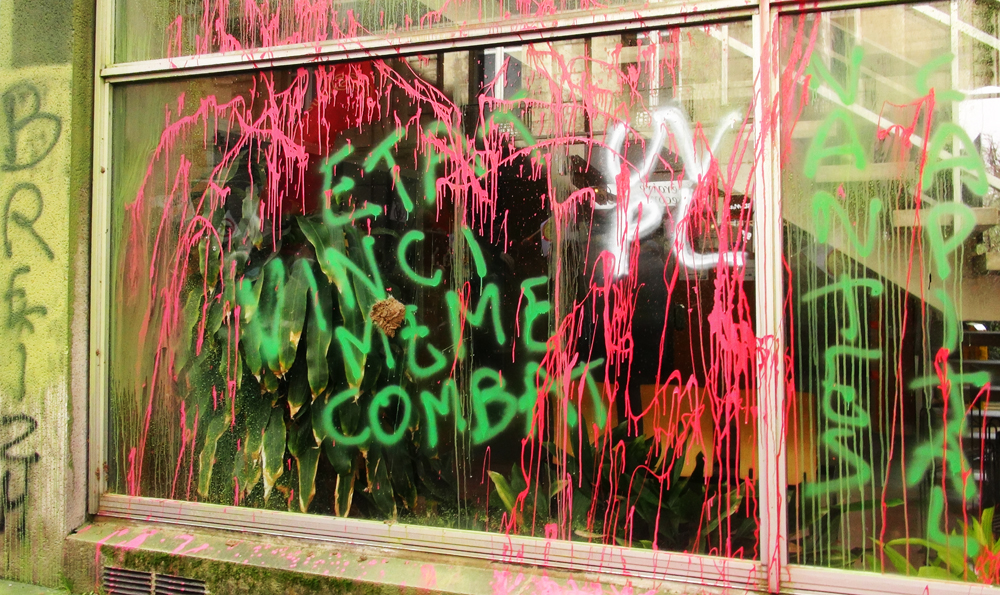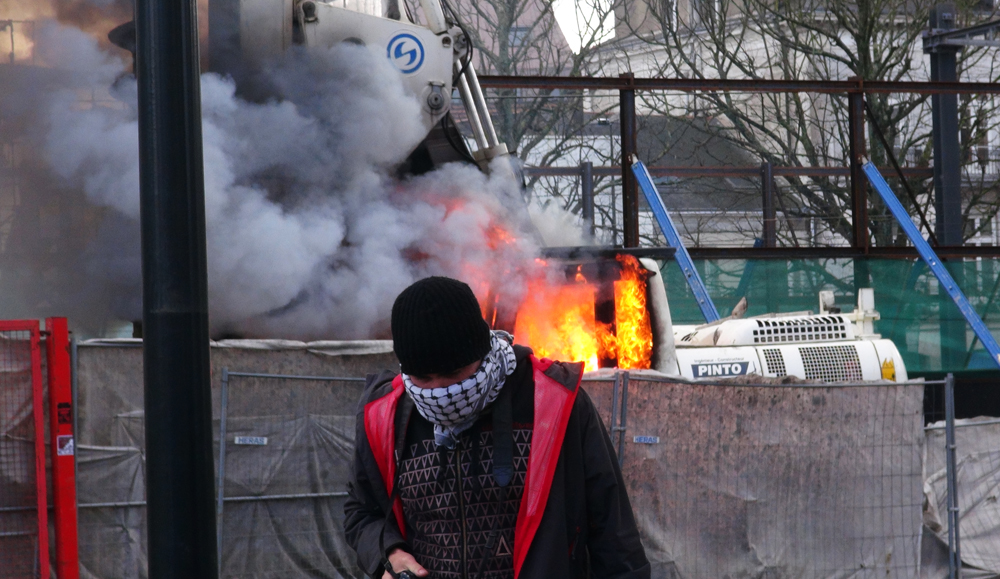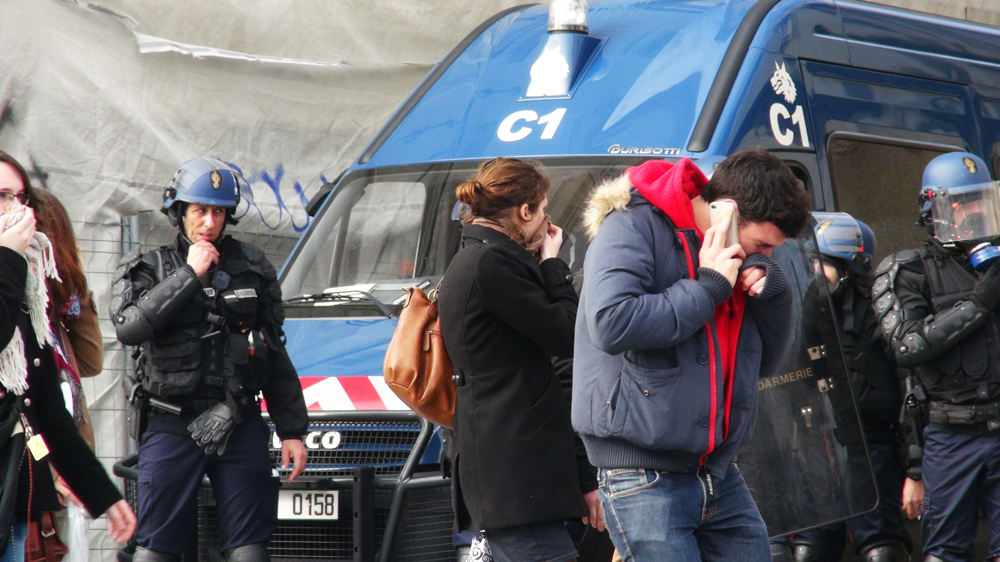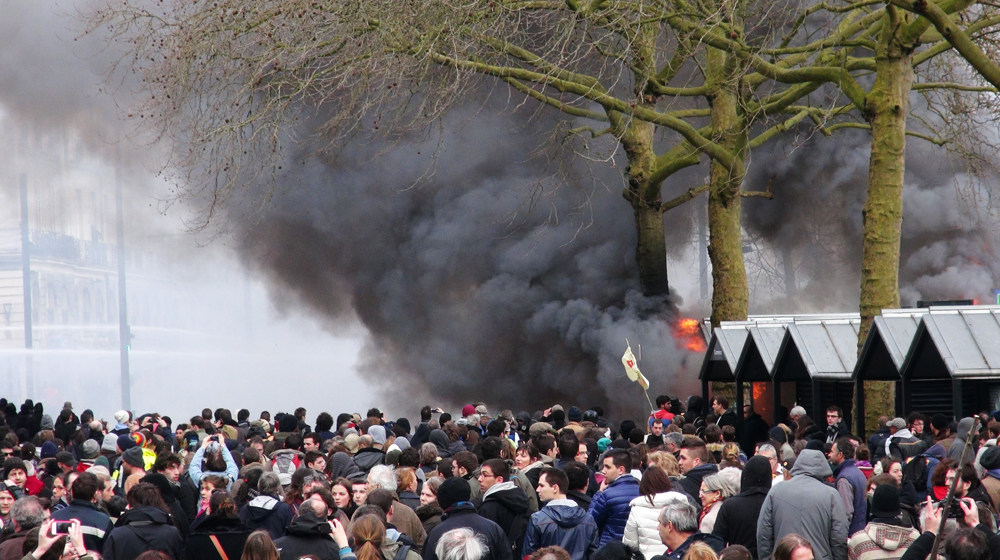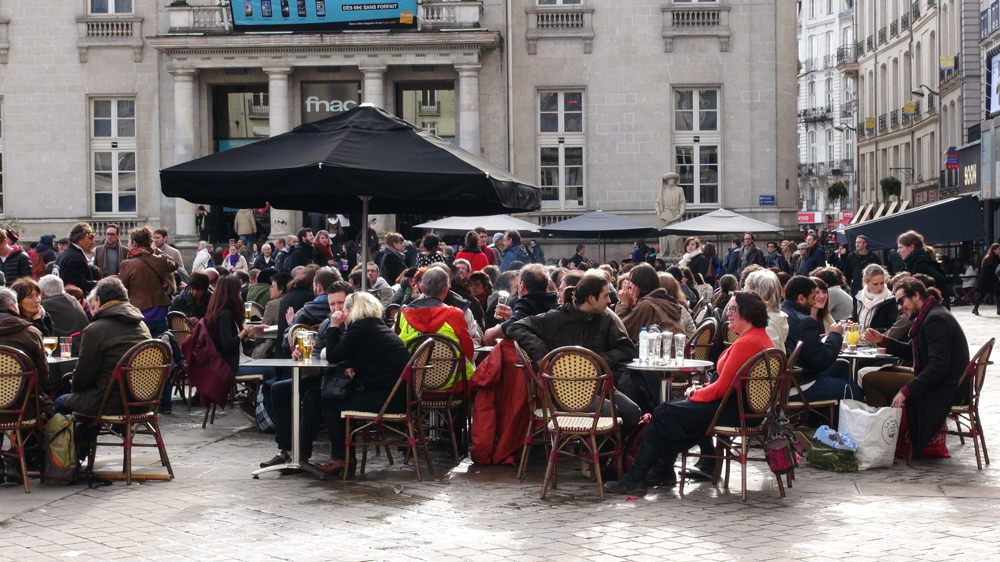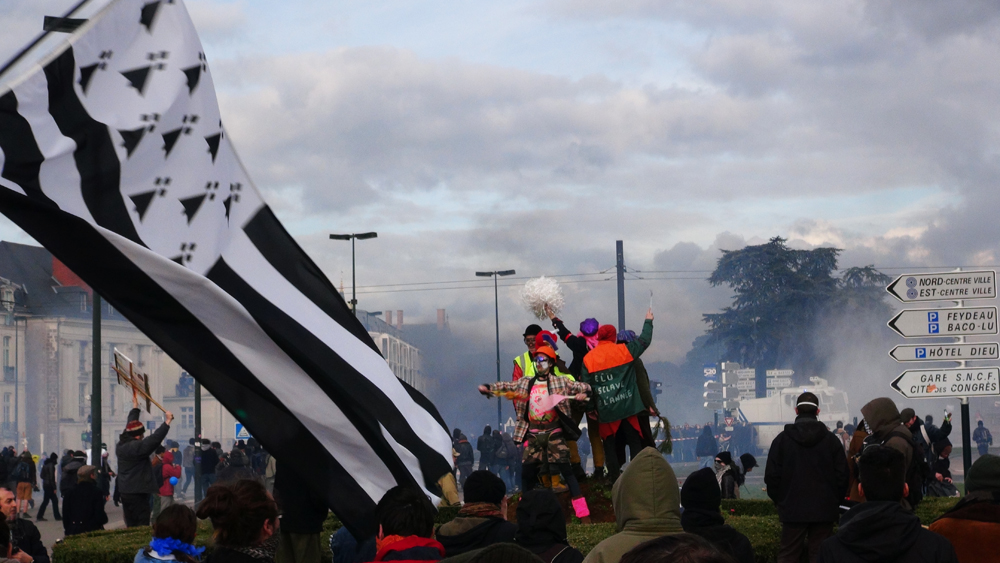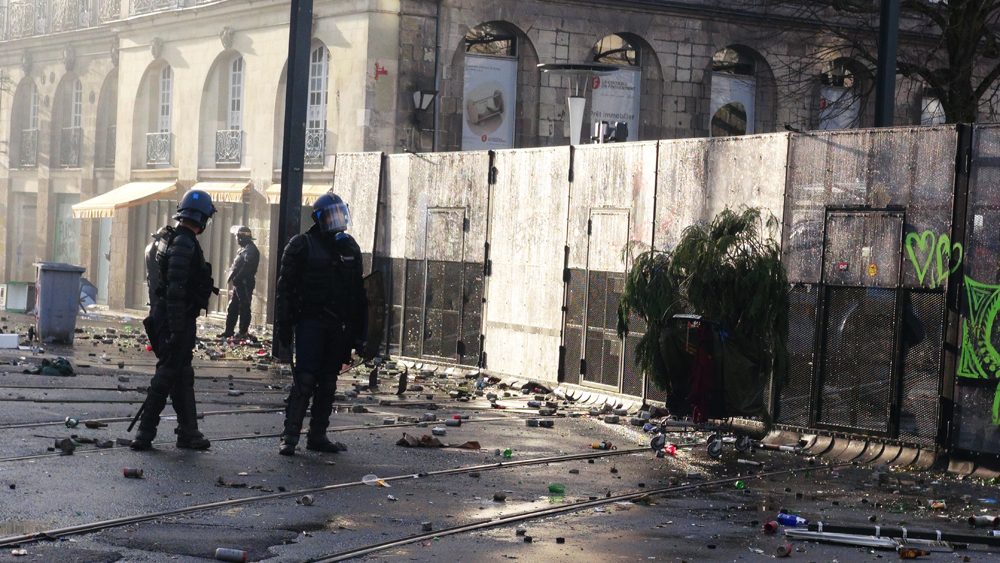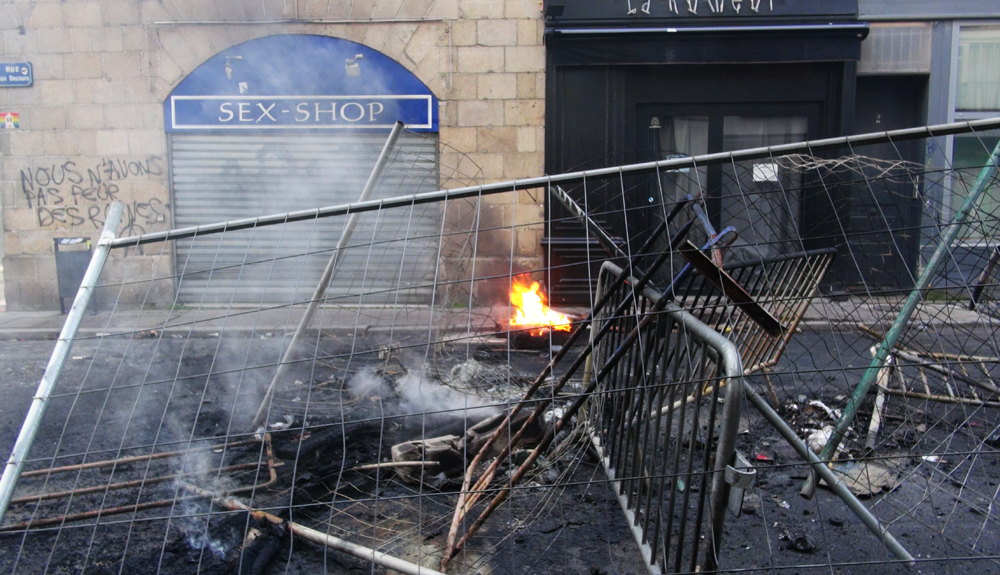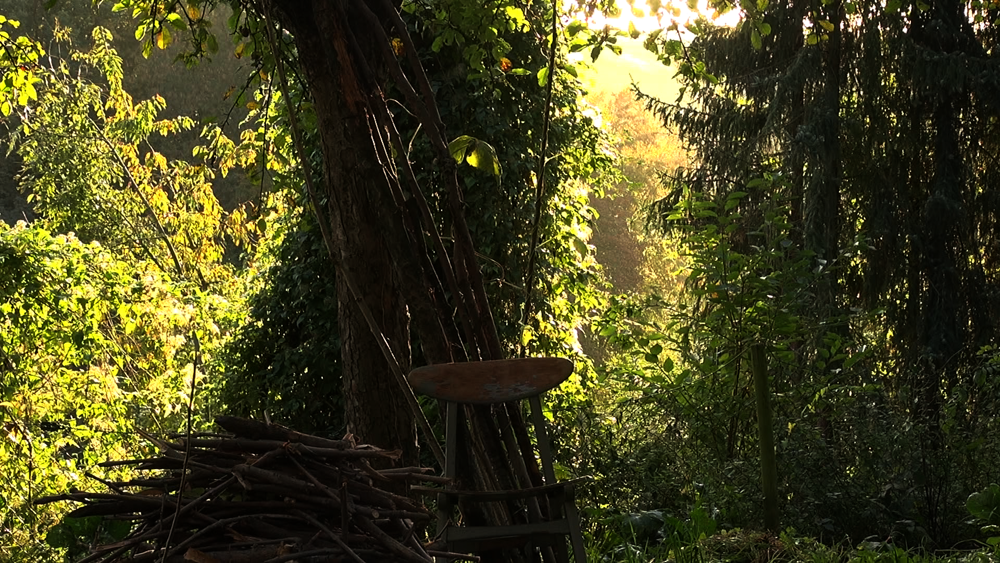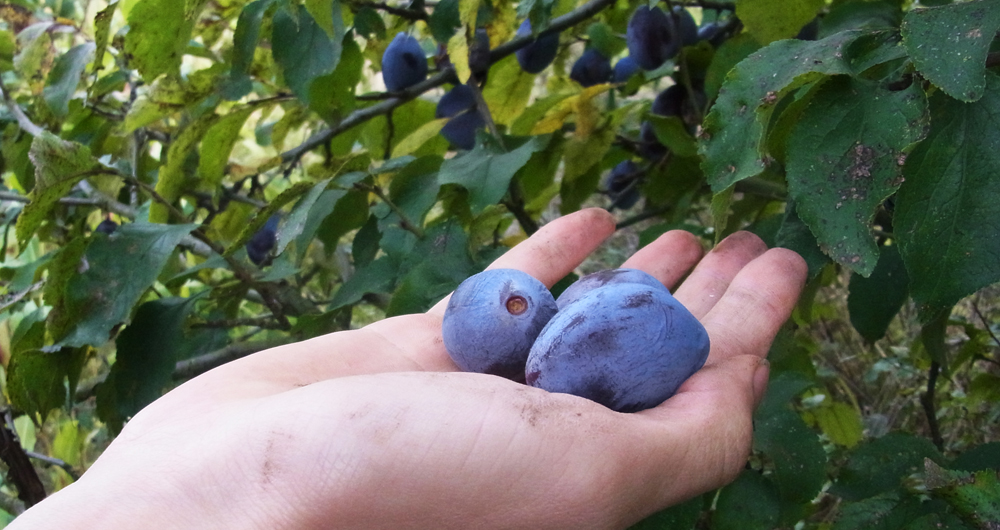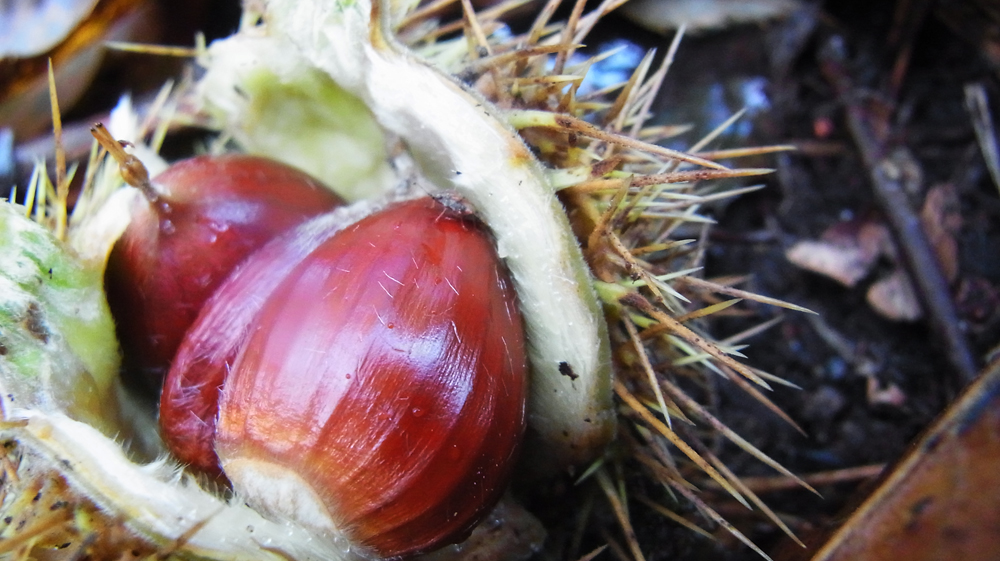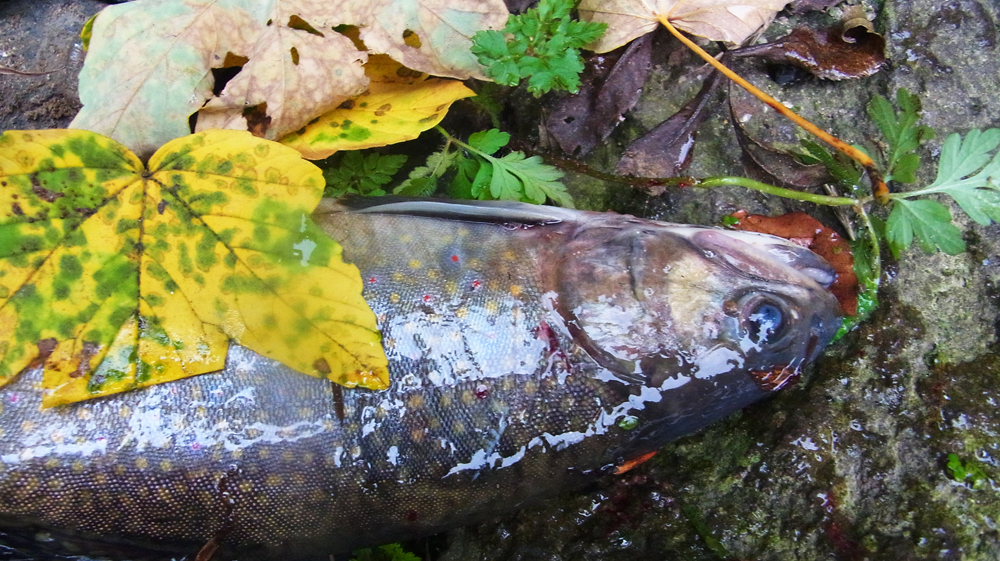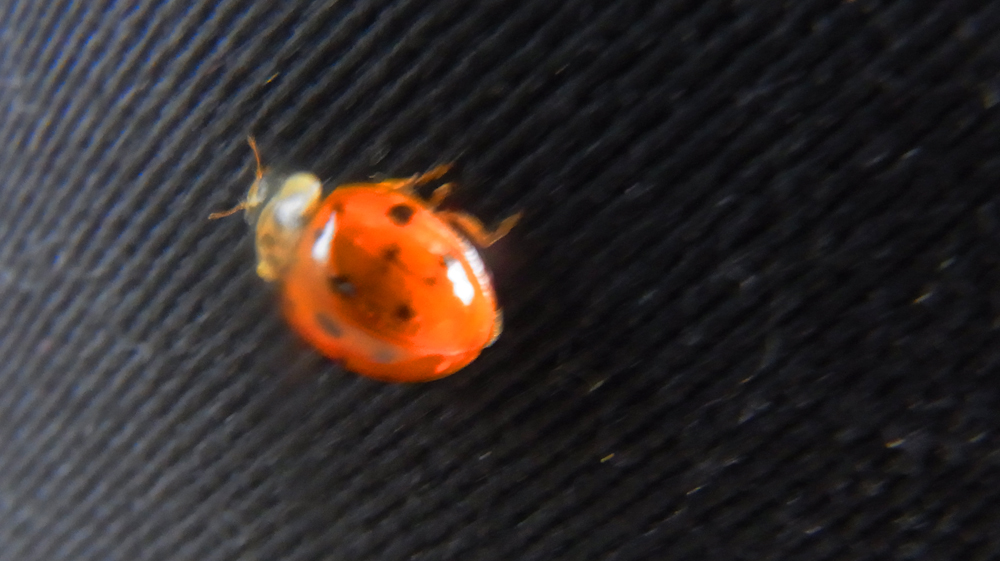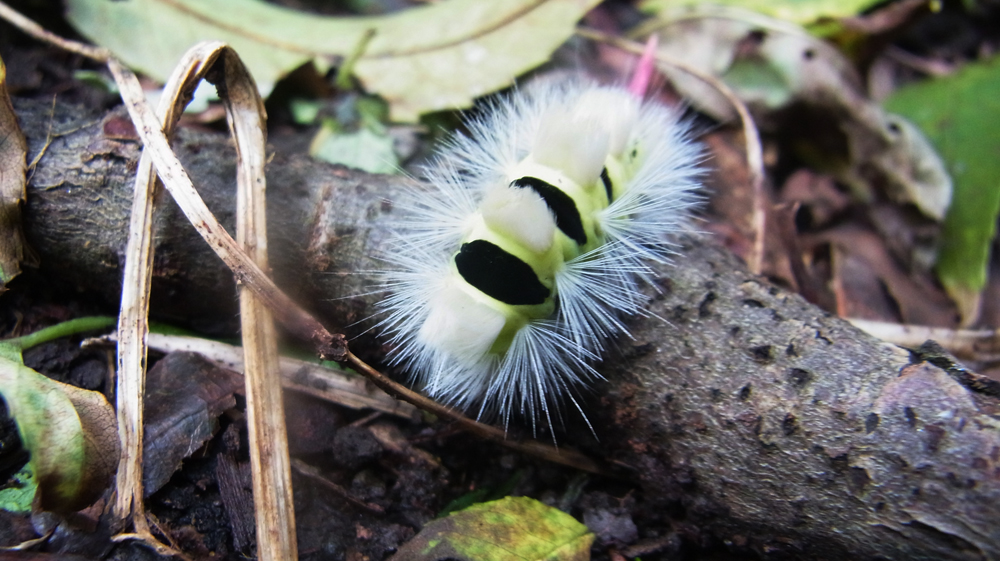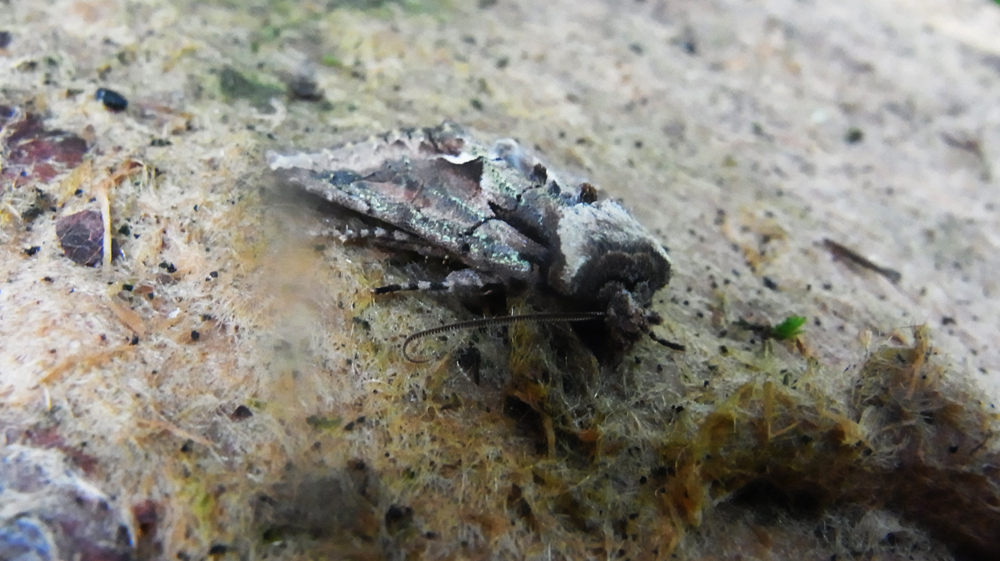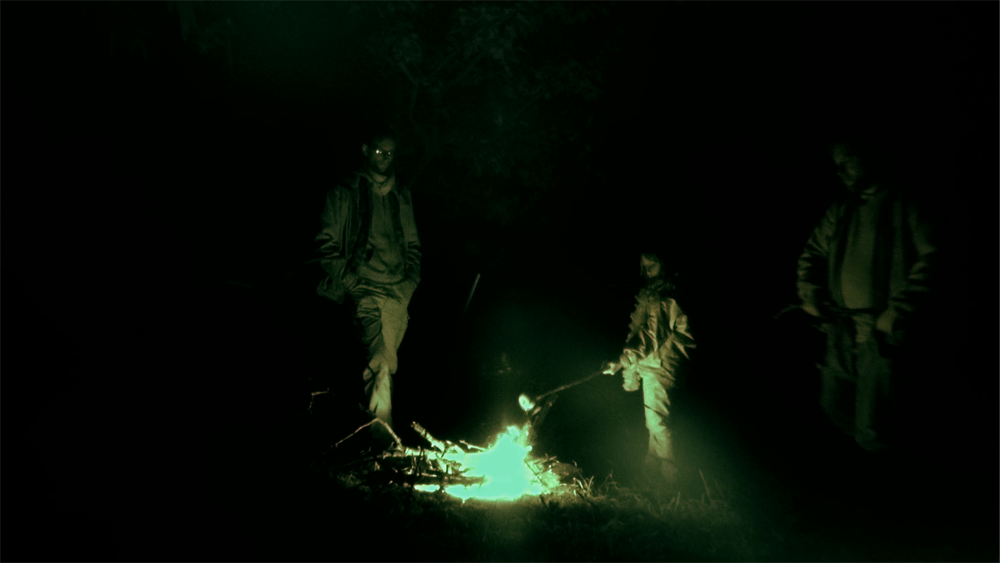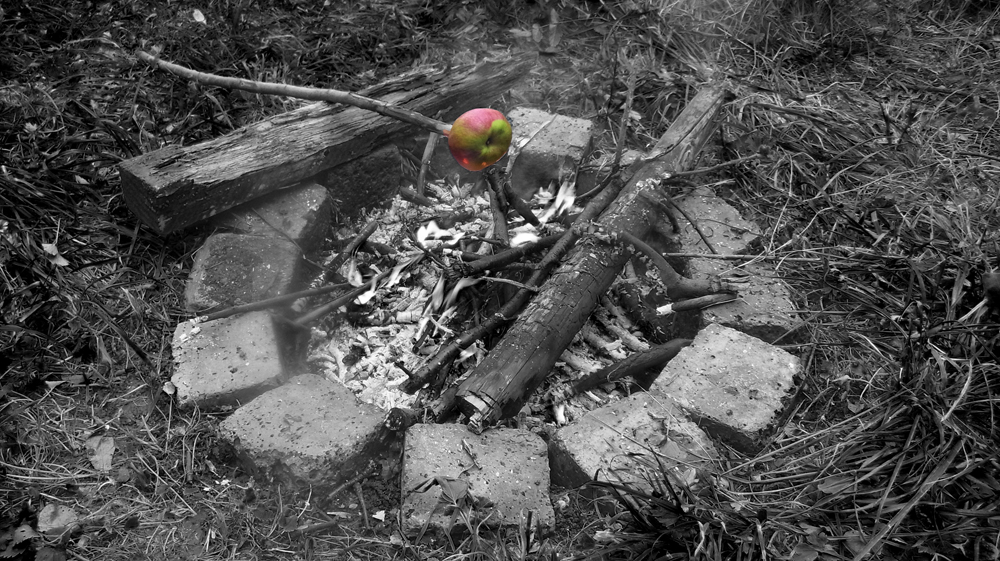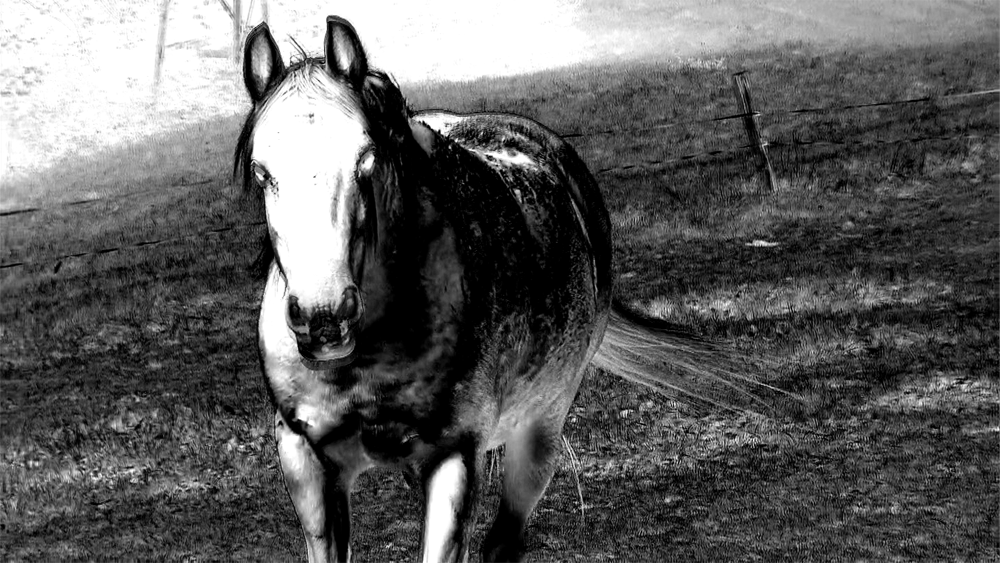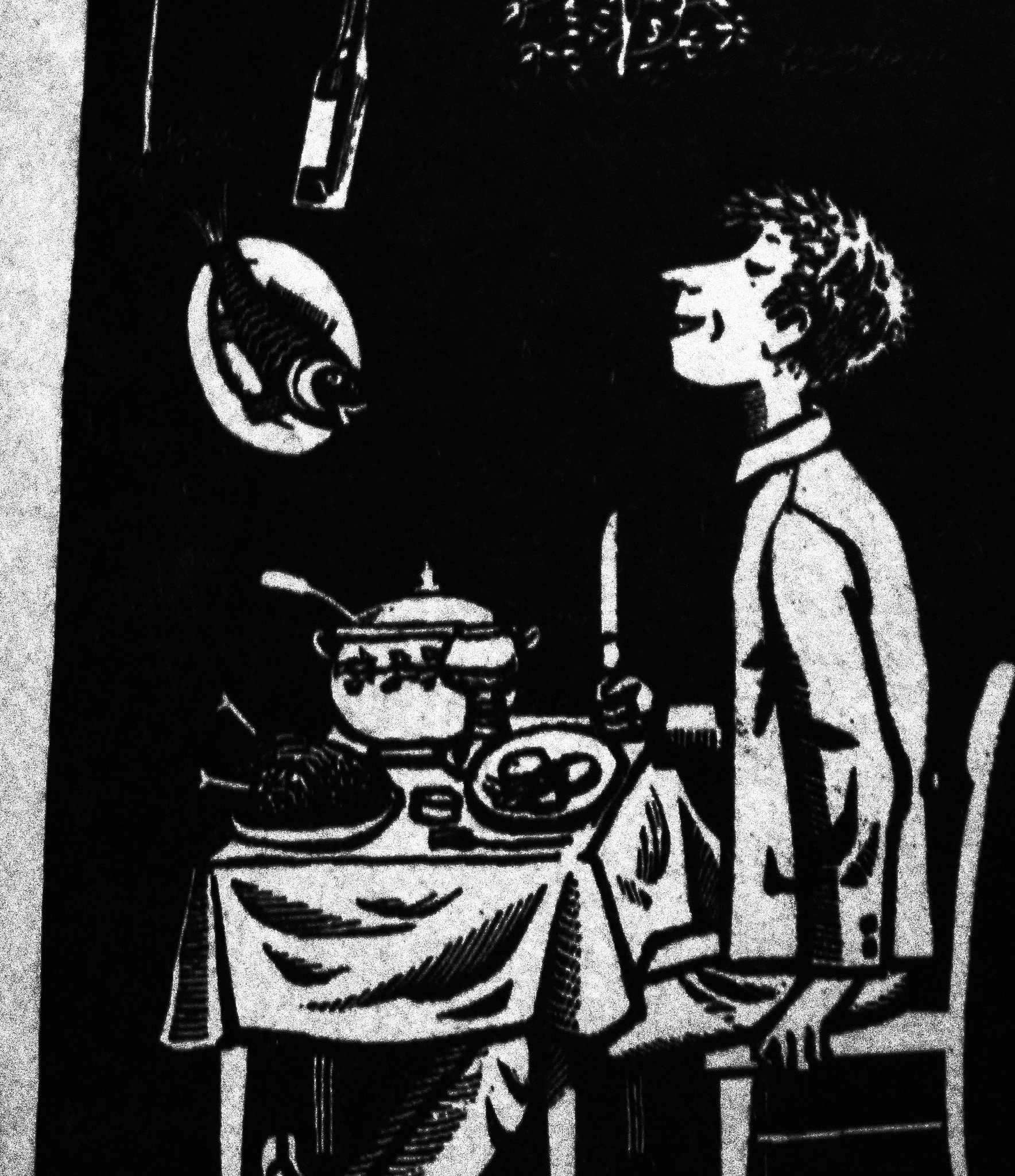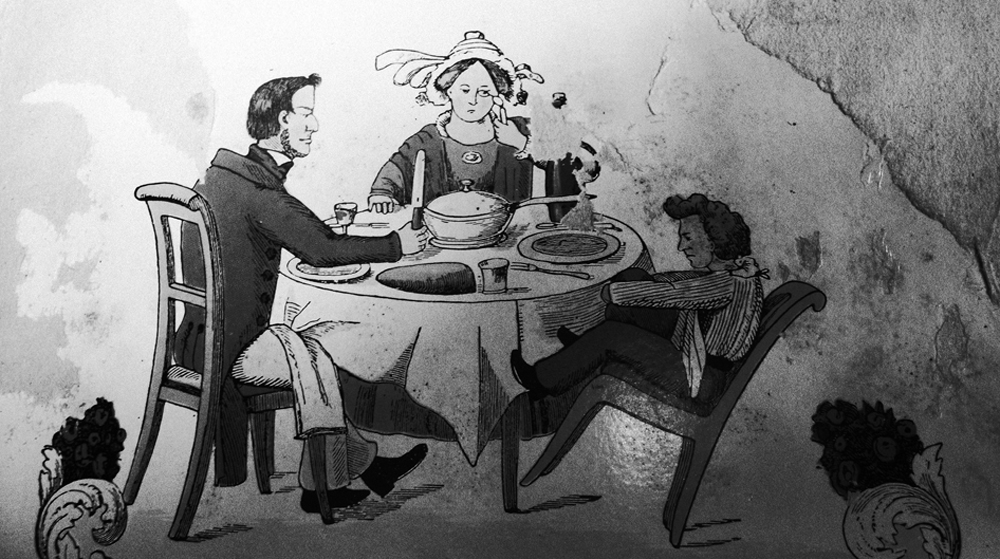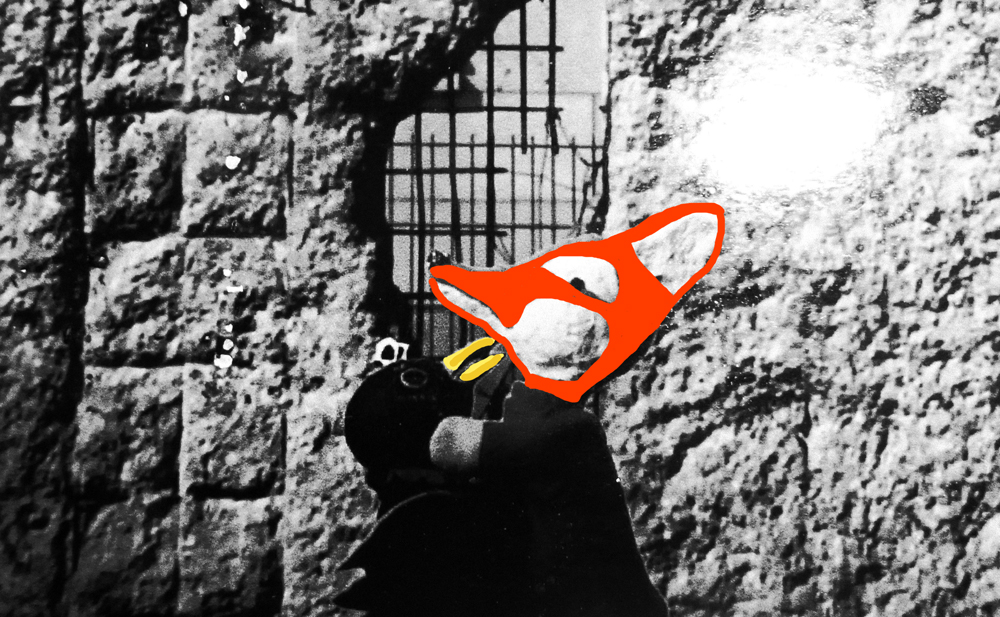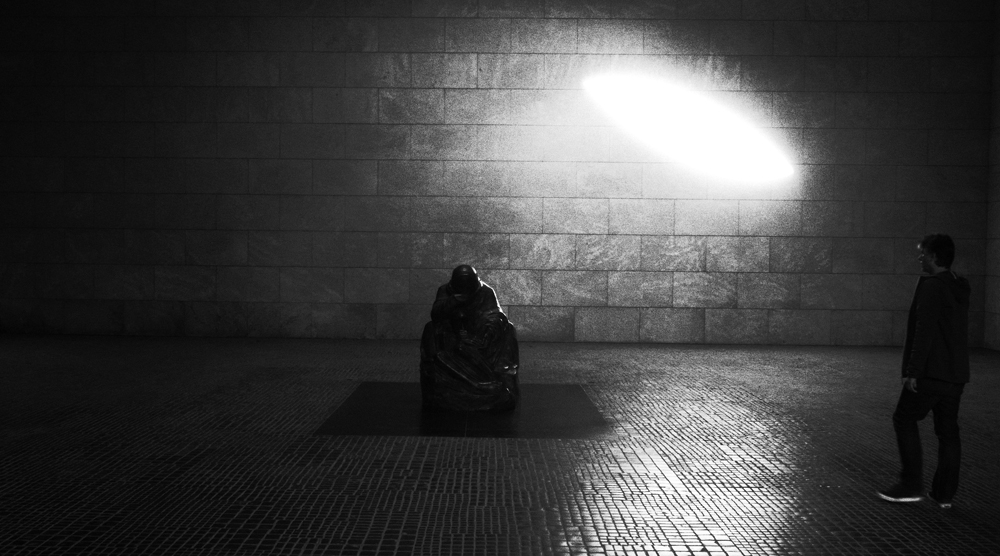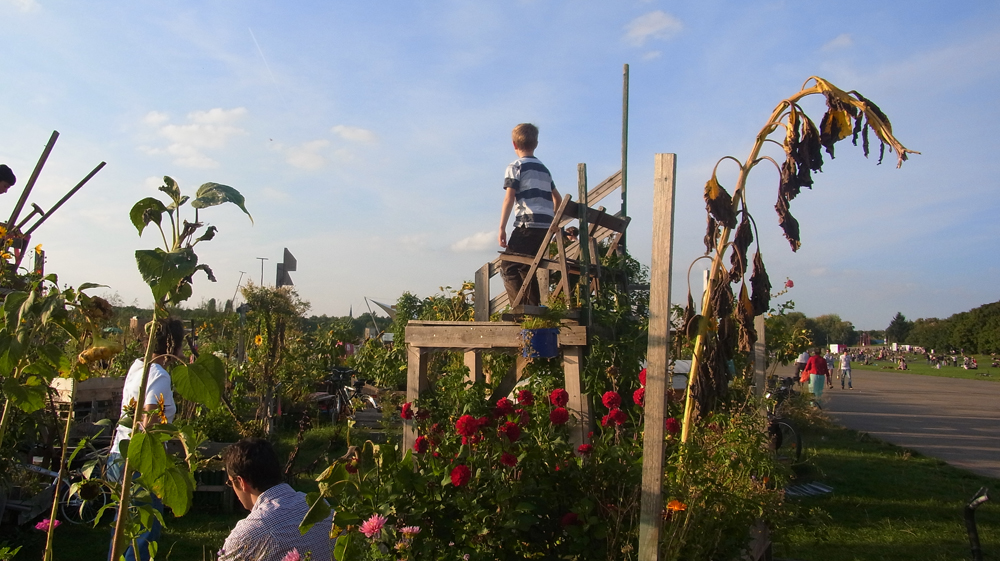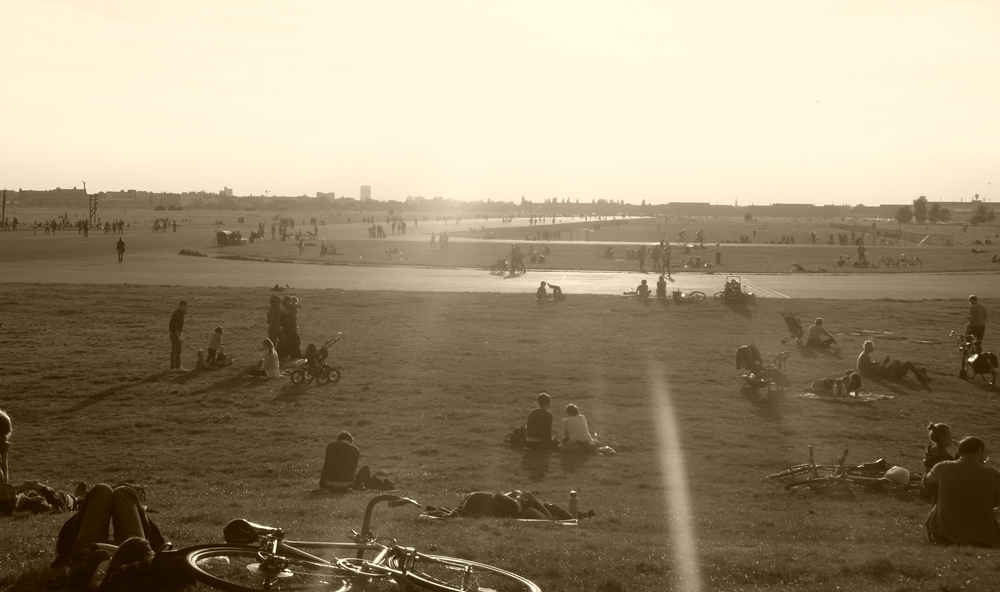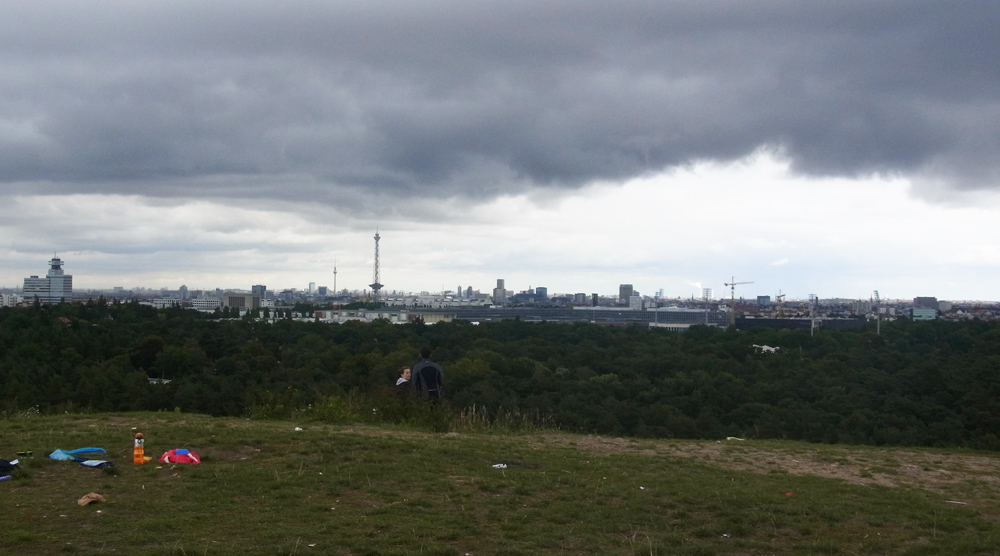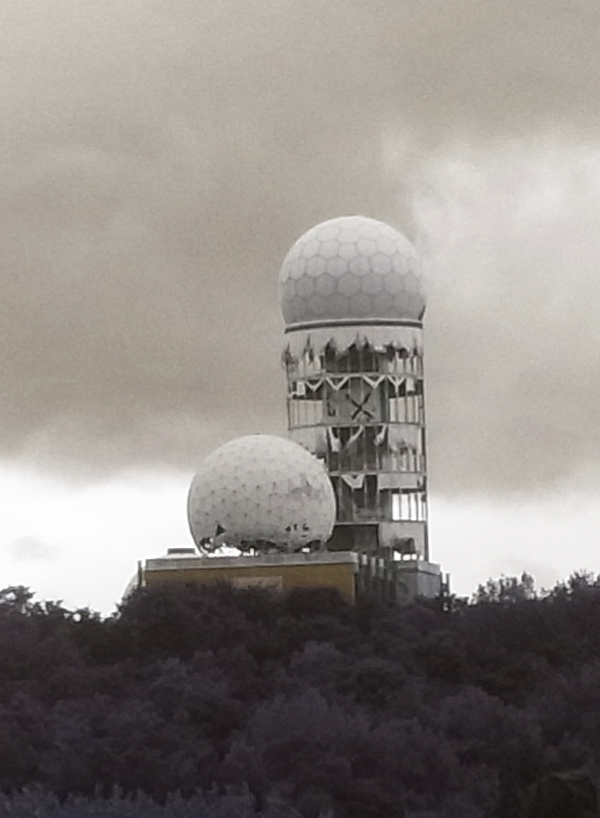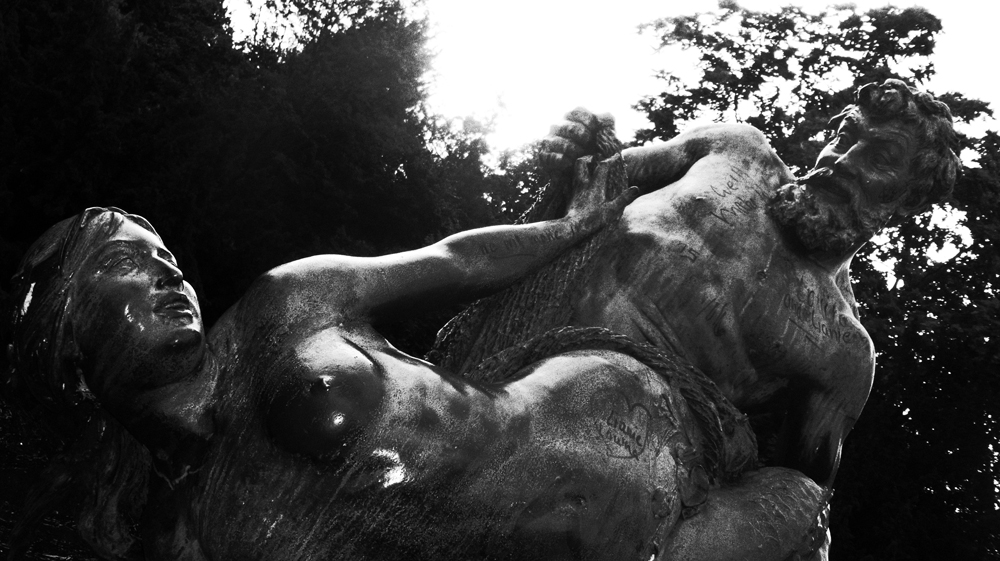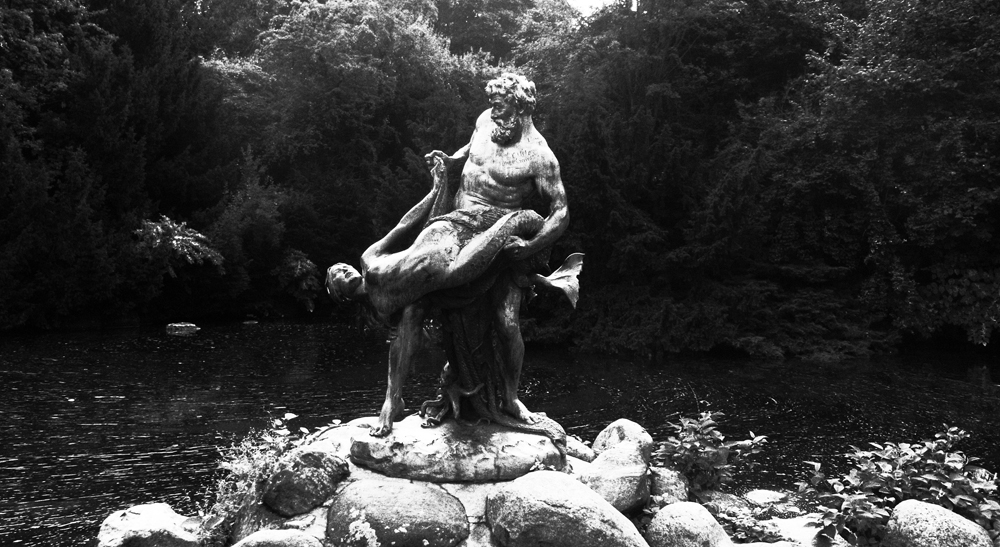The French have a great and proud culture of protesting, demonstrating and striking, so after having spent a couple weeks on wwoofing farms in France we were pleased to be invited by two veteran activists to one of these fine cultural happenings – a must for any visitor to the land of revolution. We began our experience with a four-hour car journey from Bordeaux to Nantes, driving through the flat sodden land. We arrived in Nantes early, and made our way to the square from which the march would begin. There we had a picnic and watched as people arrived.
The demonstration itself was part of an ongoing campaign since the seventies to stop the creation of a large second airport close to Nantes. The construction of the airport, approved by the country’s new “socialist” prime minister, would see the destruction of important mature forest, as well as homes and farms. Opponents of the airport also claim that it is a waste of public money during a time of economic crisis (the airport is projected to cost 556 million euros, and is scheduled to be completed by 2017.). The government took the boring, overused and frankly inaccurate line that the construction of the airport was good for the economy. Activists responded with an ongoing occupation of the site, building tree-sits, gardens and roadblocks. And the location was the site of running battles with police in late 2012.
Many of the demonstrators turned up in carnival stile costumes, with face paint, flags, masks, clown outfits, lizard costumes, and pink wigs, while some dressed in classic anarchist black-bloc, while still others came in their everyday garb. It was an eclectic coalition of farmers, ecologists and anarchist, attracting demonstrators from across the country. The protest was attended by 550 tractors, pulling colourful floats, some with bars, some with music, some covered in foliage. People kept arriving in droves, beating drums, dancing, waving flags and blowing whistles. Some even arrived by water, paddling their way across a small lake, placing floating flags in the water. The protest began to swell to fifty thousand people. Black clad riot police blocked the streets and at about 2 pm the march kicked off.
At first the march seemed peaceful, but then we began to notice signs of anarchy: paint bombed and tagged shop fronts, while the lines of riot police that blocked the side streets were covered in paint.
We then passed the front of a building. It was broken and smashed in with black smoke billowing from the inside; it was the office of Vinci, the company contracted to build the new airport.
The demonstrators marched on. We came to a construction site and saw dark red flames engulfing a crane, sending a column of black smoke into the now blue sky.
We passed along a wide muddy avenue to the corner of another street, by the police station. Here a bin was lit on fire and next to it water gushed from a broken valve, and we heard large explosions from the surrounding streets. The police station was covered in graffiti and paint. Its front was smashed open and burning. We continued walking to the front of the march where several tractors faced police barricades and the demonstrators were pushing against the police line in an attempt to bring the barriers down.The police responded with a shower of tear gas canisters that filled the street with burning smoke. It saturated our eyes and lungs. We ran.
As the day continued the city began to resemble a warzone. Demonstrators lit new fires and set up their own barricades throwing anything that they could find at the police, who responded with more tear gas and water canon.The demonstrators set fire to a complex of small buildings in the main bus station, while in a bizarre juxtaposition just down the road people were calmly drinking coffees and eating cakes, taking a break from the revolution.
In another location one of the tractors was blasting dance music while a group of clowns danced in the middle of a roundabout. The police advanced, firing more tear gas. Demonstrators hurled improvised missiles, and large explosions sounded from nearby.
As the evening wore on, we left the site of the destruction walking through the city back to the car. We passed streets filled with broken glass and burning barricades, smoking in that ancient beautiful city.
The violence of the protest made headlines in the press and the French interior minister denounced the protesters as violent radicals, waging an “urban guerrilla” war. At least six police and an unknown number of protestors were hospitalized. The media and the government focused on the violent outburst only and ignored the fundamental issues that brought this about: a stubborn unwillingness to support the people and the environment and instead to pour over a half billion euros of public money into an unpopular, destructive and unnecessary project, a project that serves only to line the pockets of the country’s elite.
Protest in Nantes from Daniela Gast on Vimeo.
